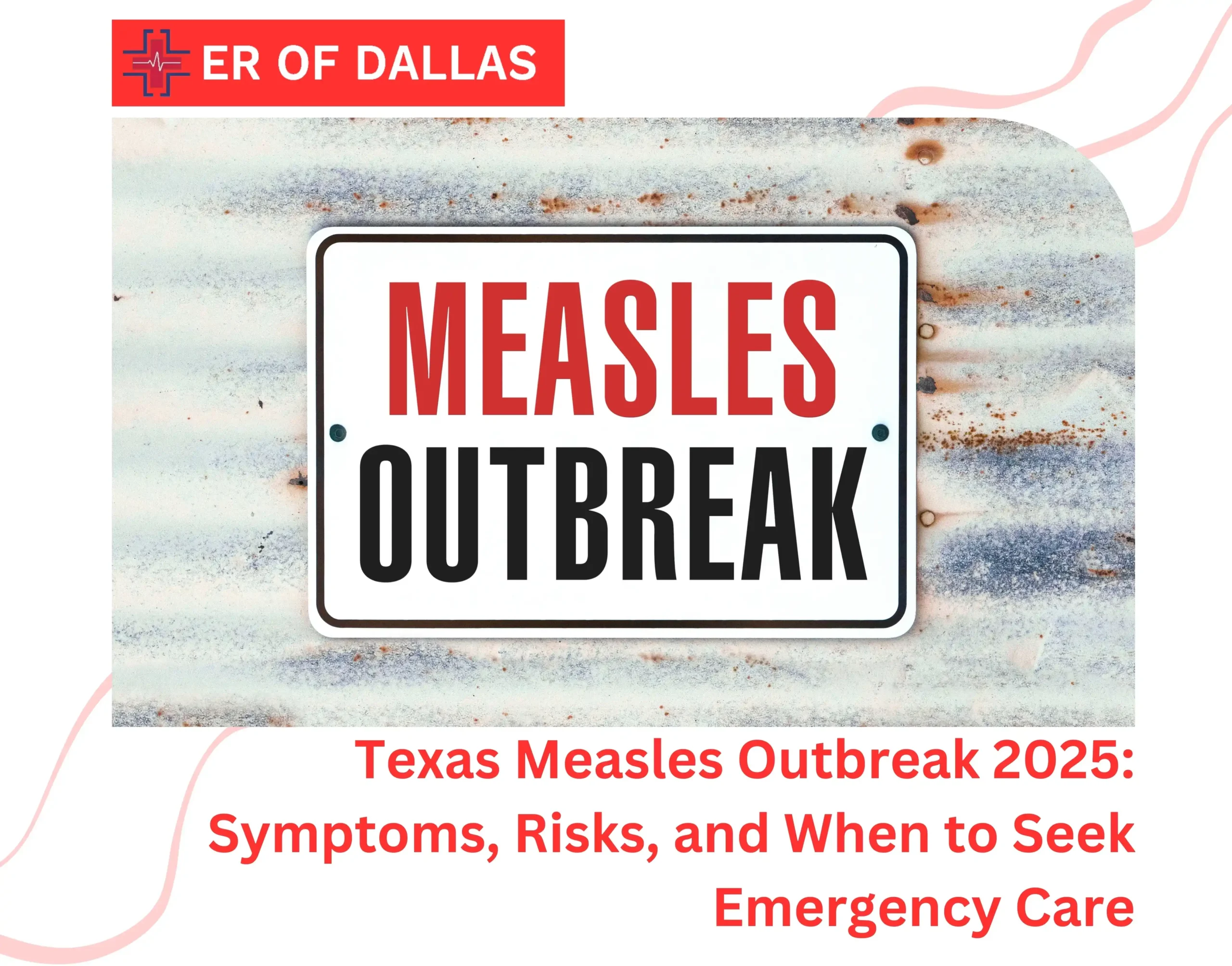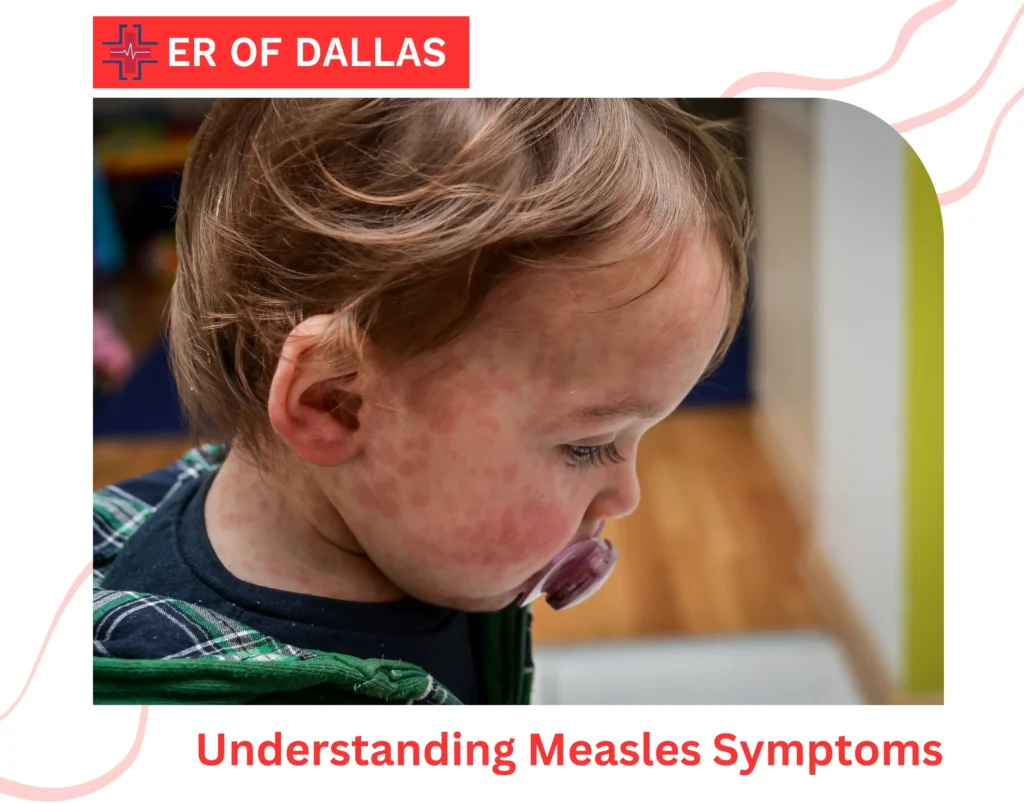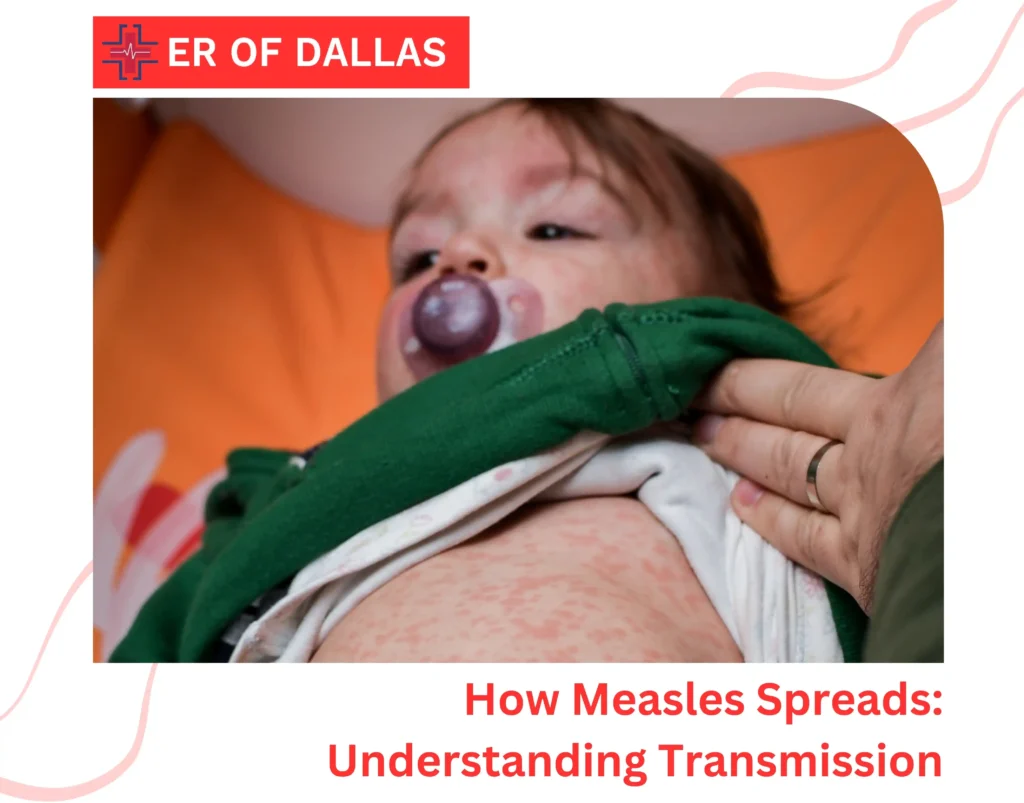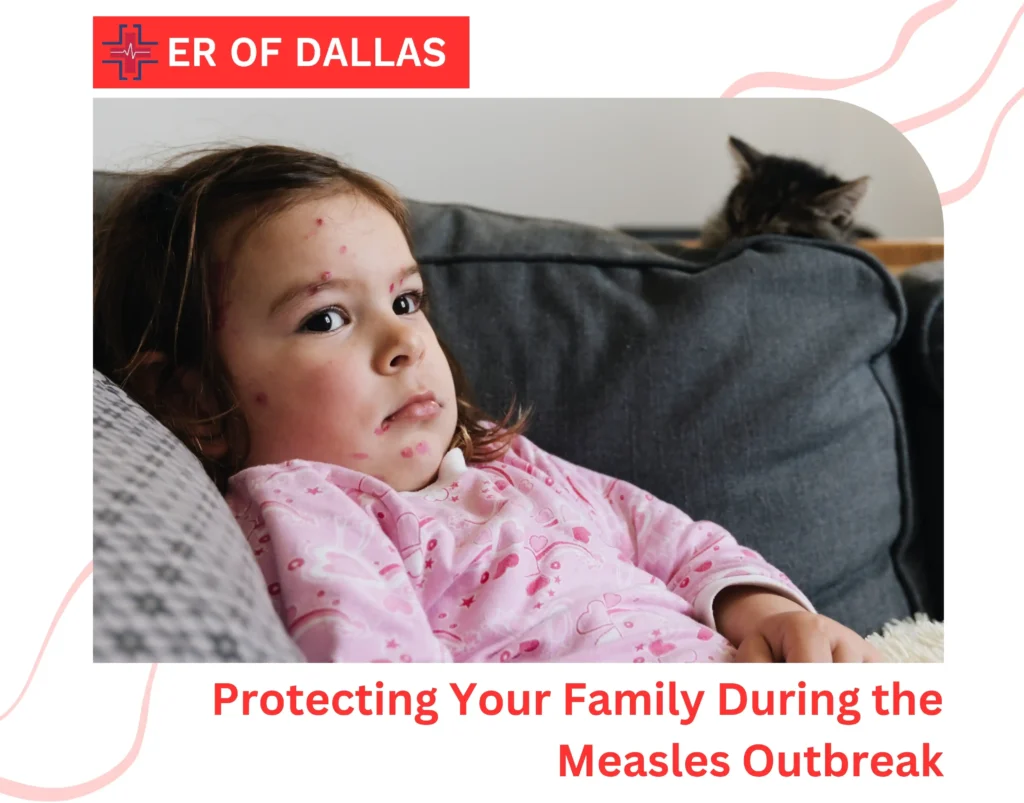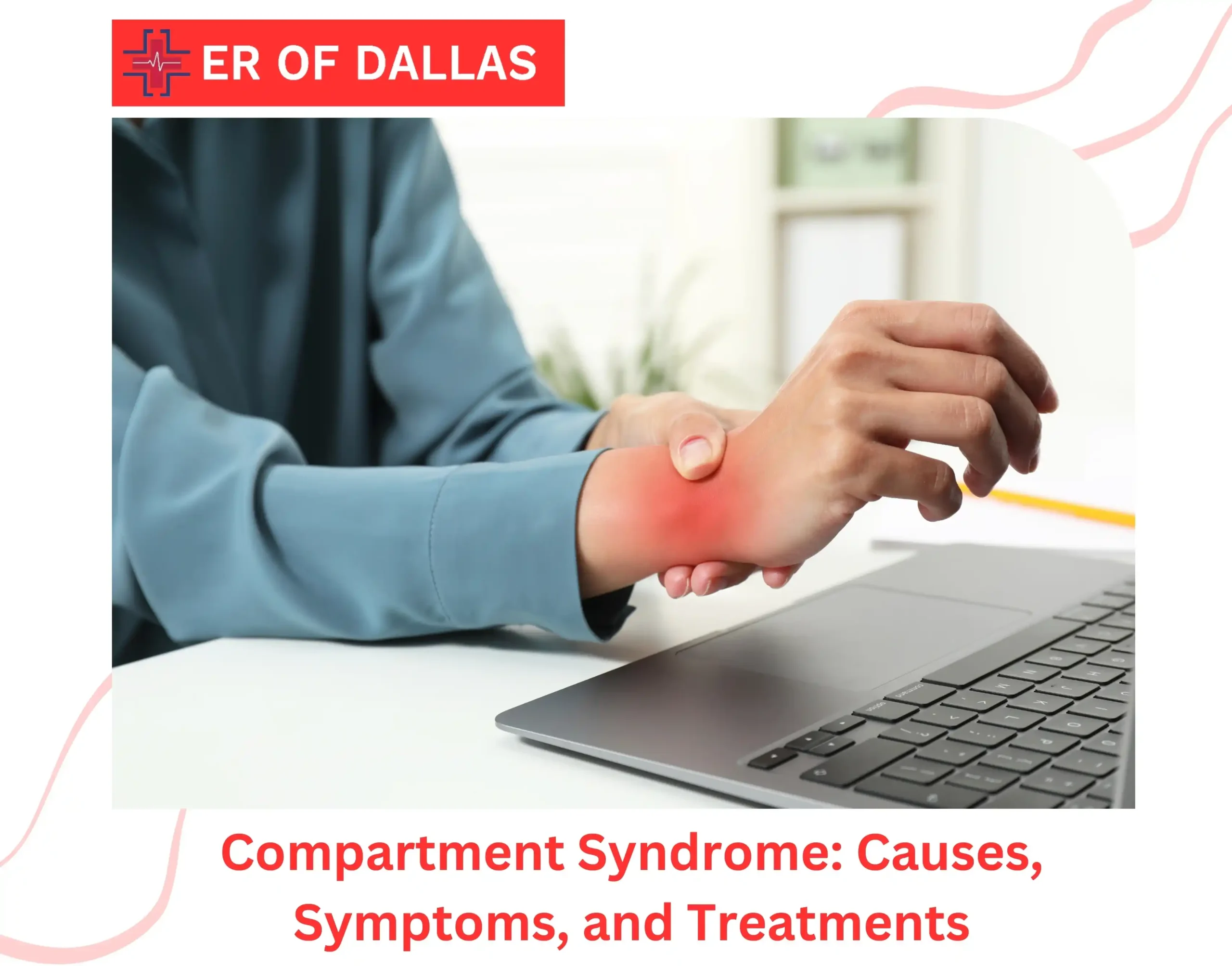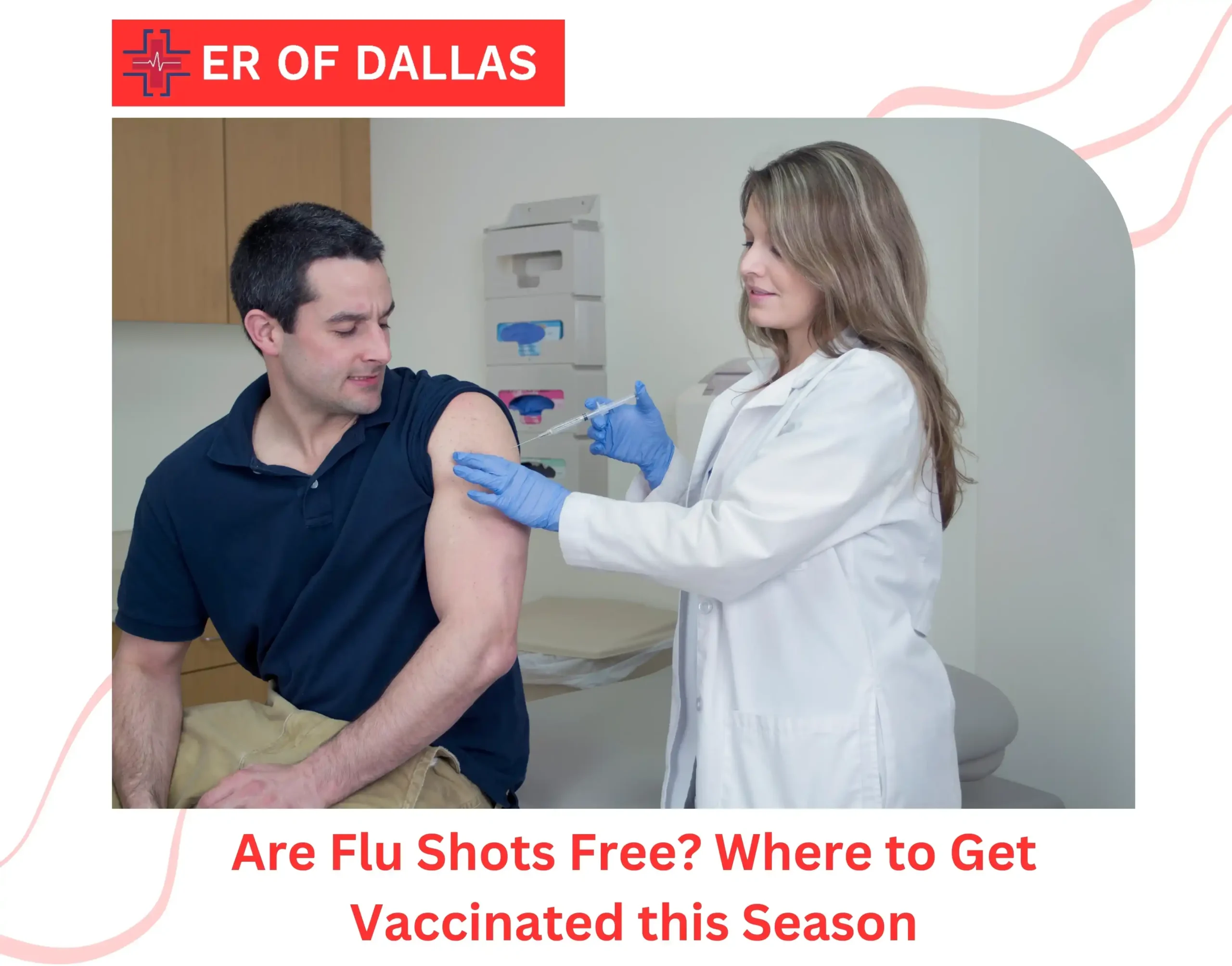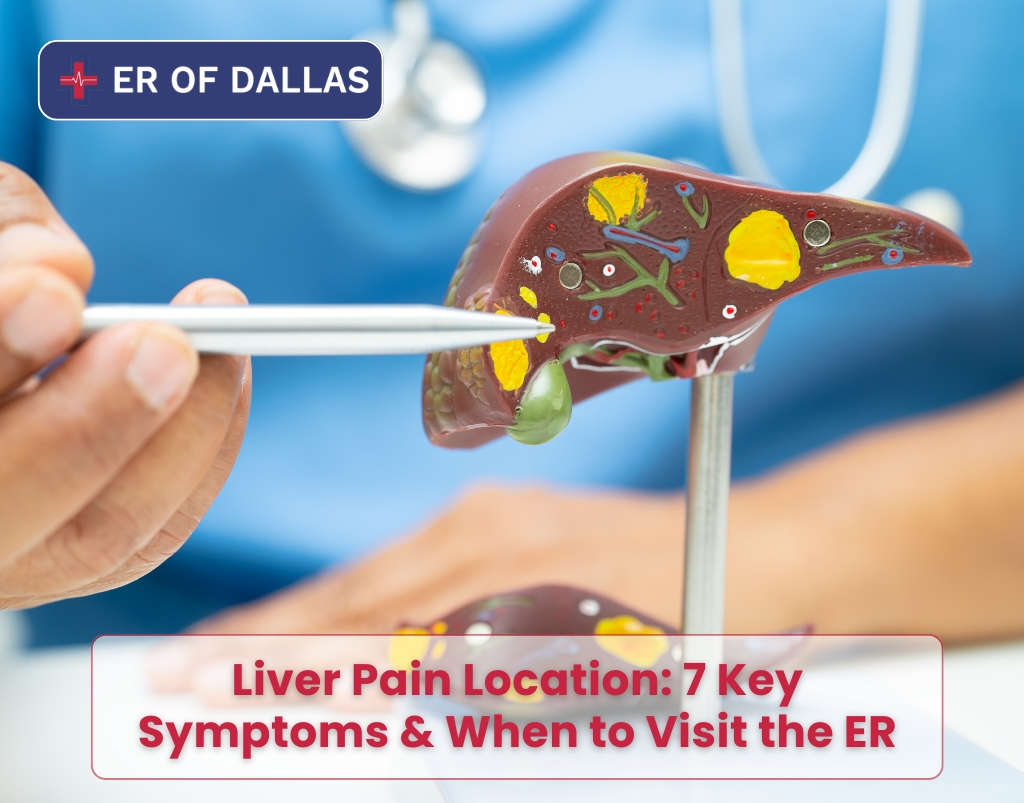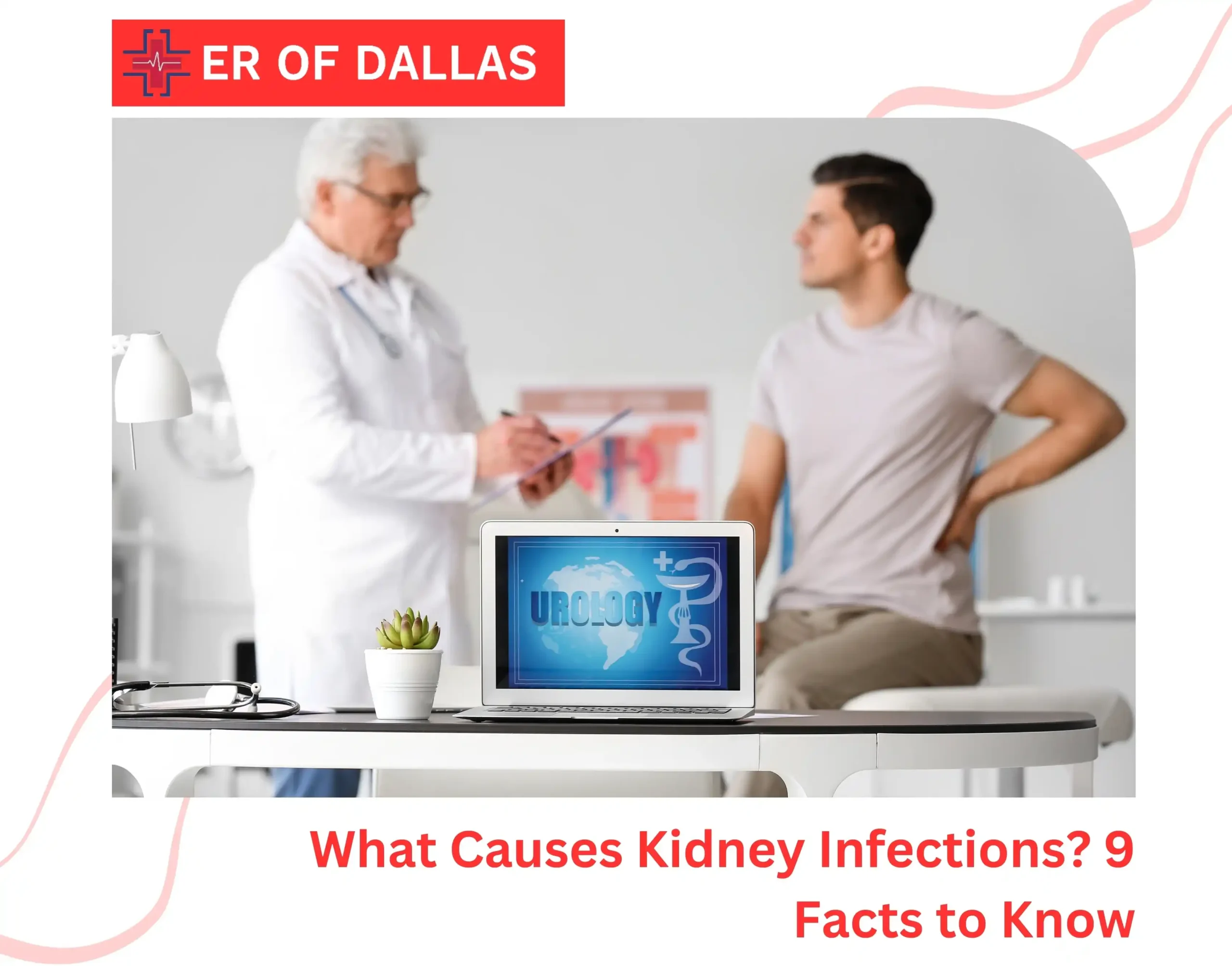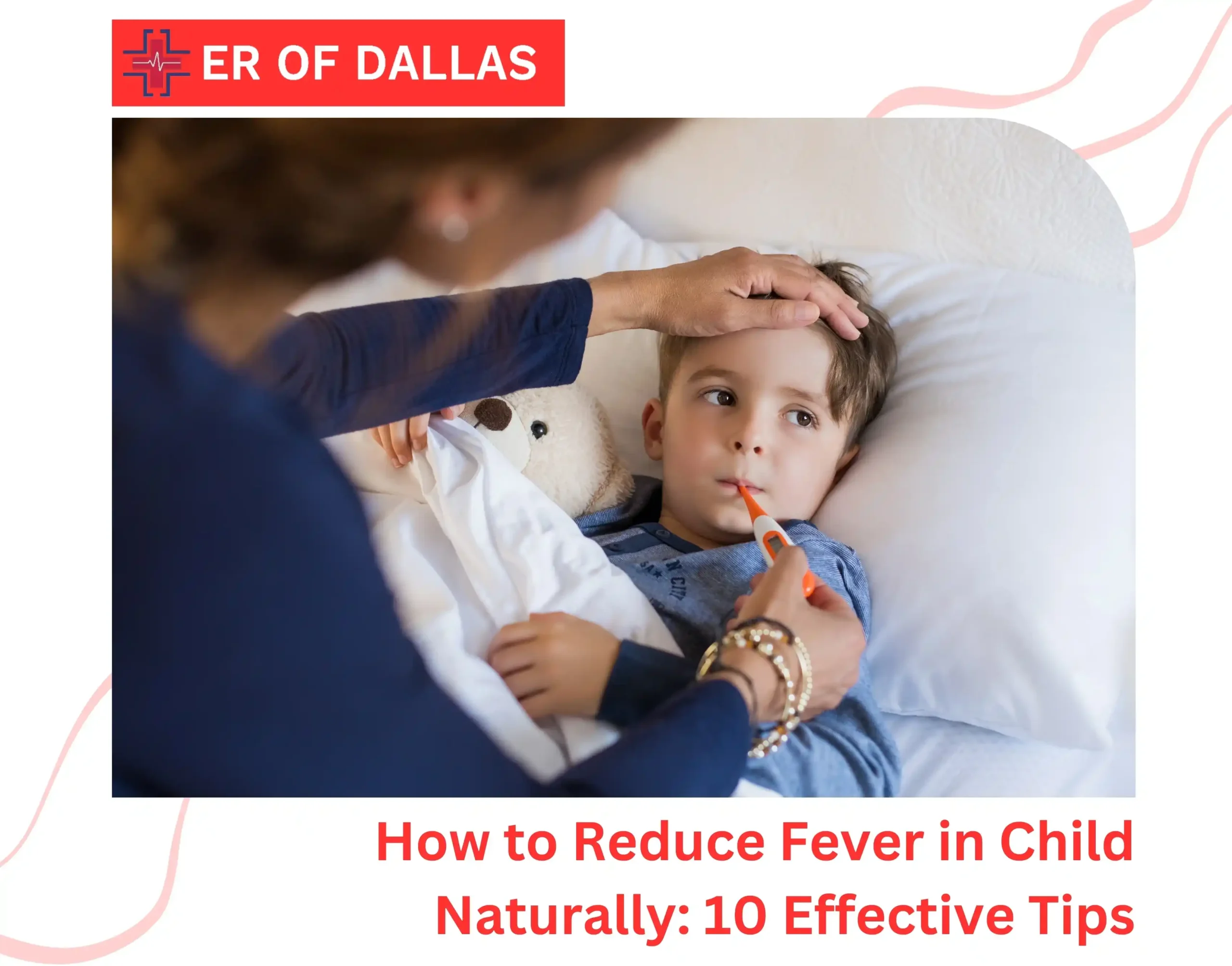Texas is facing its largest measles outbreak in 30 years, with cases surging across Lubbock, Gaines County, and surrounding areas¹. This highly contagious virus spreads rapidly through communities, putting unvaccinated individuals at significant risk.
The initial fever and rash can quickly escalate to severe complications, particularly in children and those with weakened immune systems. What starts as common cold symptoms can progress to dangerous breathing difficulties and neurological changes within days.
At ER of Dallas, our emergency physicians help families identify critical measles symptoms and provide quick relief. Let’s understand when these symptoms require emergency care and how to protect your family during this outbreak.
Understanding Measles Symptoms
Recognizing the difference between early measles symptoms and emergency warning signs can be critical during this outbreak. Here’s what you need to watch for:
Common Symptoms of Measles
Measles typically develops in stages over about 14 days after exposure. The first signs often include:
- High fever, reaching 101°F to 104°F
- Persistent cough
- Runny nose
- Red, watery eyes
- Sore throat
- Small white spots inside the cheeks
The distinctive measles rash appears about 3-5 days after these initial symptoms begin. The rash starts as flat red spots on the face and spreads downward to the neck, trunk, arms, legs, and feet. As it spreads, the spots may become raised and join together. The entire rash typically lasts about 5-6 days.
When to Seek Emergency Care for Measles
While many people recover from measles without complications, certain symptoms require immediate medical attention. Seek emergency care if you or your child experiences:
- Severe difficulty breathing or shortness of breath
- Persistent fever above 104°F that doesn’t respond to medication
- Confusion or extreme drowsiness
- Signs of dehydration, including decreased urination
- Severe coughing that interferes with breathing
These warning signs can indicate serious complications that need immediate treatment. Don’t wait to see if symptoms improve. Early intervention is crucial for preventing life-threatening situations.
Current Status of Texas Measles Outbreak
The 2025 measles outbreak in Texas has become the state’s largest in three decades. Gaines County remains the epicenter with 42 cases, while surrounding areas report additional infections: Terry County (3 cases), Lynn County (1 case), and Yoakum County (2 cases).
Children and teenagers have been particularly affected, with 42 cases occurring in individuals under 18 years old.
This rapid spread demonstrates the virus’s highly contagious nature, as one infected person can transmit measles to up to 90% of unvaccinated people who come in close contact.
Unvaccinated individuals, particularly children, face the highest risk during this outbreak. The virus spreads through airborne respiratory droplets and can remain active in the air for up to two hours after an infected person leaves an area.
How Measles Spreads: Understanding Transmission
Measles ranks among the most contagious viral infections, spreading rapidly through communities. Understanding how transmission occurs can help you better protect your family during this outbreak.
Here’s how measles typically spreads:
1. Through the Air
Coughing and sneezing release infectious droplets into the air, where they can remain active for up to 2 hours. You can contract measles simply by being in the same room where an infected person has been, even after they’ve left.
2. Direct Contact
Transmission occurs through close personal contact with an infected person, touching contaminated surfaces, or handling objects that have been exposed to infectious droplets. The virus enters your body when you touch your eyes, nose, or mouth after contact.
3. Timeline of Contagion
People with measles can spread the virus 4 days before developing the characteristic rash and remain contagious for 4 days after the rash appears. The disease is most contagious when initial symptoms first begin.
4. High-Risk Settings
Schools, daycare centers, healthcare facilities, and crowded indoor spaces with limited ventilation pose the highest risk for transmission. This explains why outbreaks often start in places where people gather in close proximity.
Understanding these transmission patterns helps explain why vaccination is crucial for preventing the spread of measles in our communities.
Protecting Your Family During the Measles Outbreak
During the measles outbreak in Texas, taking proactive steps to protect your family becomes crucial. Here are essential measures you can implement immediately:
Vaccination Protection
Getting vaccinated is your strongest defense against measles. The MMR vaccine is 97% effective with two doses and remains the most reliable way to prevent infection. Children should receive their first dose at 12-15 months and a second dose at 4-6 years.
Exposure Prevention
Avoid crowded indoor spaces when possible, especially in areas with reported cases. Keep infants and unvaccinated children away from potentially exposed individuals. If you must visit high-risk areas, minimize your time there and maintain good ventilation.
Health Monitoring
Watch for early symptoms, especially if you’ve been in areas with known cases. Take temperature readings when symptoms appear and keep detailed notes of any changes. This information helps healthcare providers assess the situation quickly if emergency care becomes necessary.
Immediate Response Plan
Know what to do if exposure occurs. If you suspect contact with an infected person, contact your healthcare provider immediately. Keep emergency numbers readily available, including ER of Dallas’s direct line for immediate guidance.
Understanding these protective measures helps families make informed decisions during this outbreak period.
Measles Vaccination: Your Questions Answered
With the current outbreak in Texas, many families have questions about measles vaccination and protection. Understanding vaccination facts helps you make informed decisions about your family’s health.
Understanding the Vaccine
The MMR (Measles, Mumps, Rubella) vaccine provides safe, effective protection against measles. This vaccine has successfully prevented millions of measles cases worldwide and continues to be the primary tool for outbreak prevention.
Vaccine Effectiveness
Research shows the measles vaccine provides long-lasting protection. Two doses create a strong immunity that helps prevent infection even during outbreaks. If a vaccinated person does contract measles, symptoms are typically milder.
When to Consider Vaccination
During outbreaks, vaccination becomes especially important for unprotected individuals. Discuss your vaccination status with your healthcare provider, particularly if you:
- Have an incomplete vaccination history
- Live in or plan to visit areas with active cases
- Work in healthcare or schools
- Have young children or are planning pregnancy
Important Considerations
Some people cannot receive the vaccine due to medical conditions or age restrictions. This makes community protection especially important for protecting vulnerable individuals during outbreaks.
Understanding vaccination helps families navigate protection options during this outbreak. Consult your healthcare provider for personalized vaccination guidance.
Protecting Your Family During the Measles Outbreak
The current measles outbreak in Texas requires vigilance and prompt action when symptoms appear. Know the warning signs, understand how the virus spreads, and seek immediate emergency care if you notice severe symptoms. At ER of Dallas, our emergency physicians provide expert care 24/7 for measles complications and concerns.
FAQs
How do you get measles?
Measles spreads when an infected person coughs or sneezes, releasing virus-containing droplets into the air. You can contract measles by breathing these droplets or touching contaminated surfaces then touching your face. The virus remains active in the air for up to 2 hours after an infected person leaves the area.
How long does it take for measles symptoms to show after exposure?
Symptoms typically appear 8-14 days after exposure. Initial symptoms like fever and cough develop first, followed by the characteristic rash 3-5 days later. The entire progression from first symptoms to recovery usually takes about 2-3 weeks.
When is measles most contagious?
A person with measles is most contagious from four days before the rash appears until four days after. During this period, they can spread the virus even before realizing they have measles. This makes early recognition and isolation crucial for preventing transmission.

